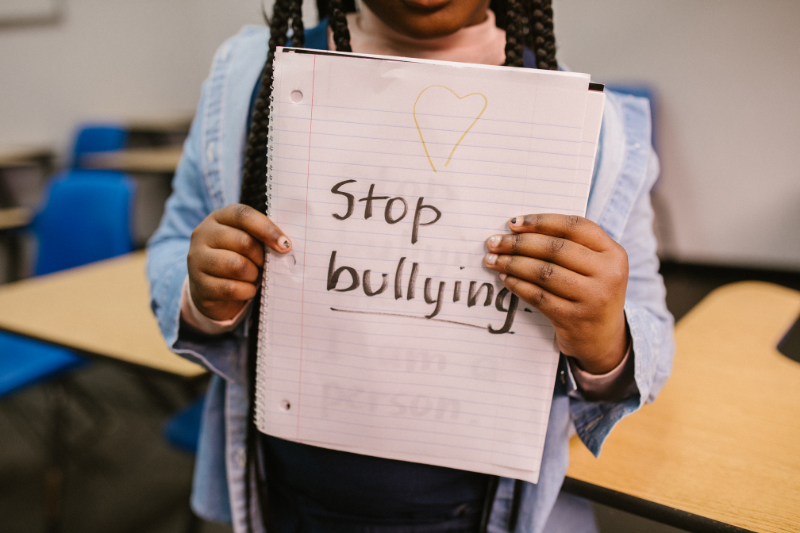ADHD and Bullying (Part 1): How to help kids with ADHD recognize, respond to and prevent bullying
 Sadly, it’s all too common that neurodivergent kids to experience some level of teasing, taunting or bullying as they grow. Despite anti-bullying policies in schools and best efforts to raise awareness, kids with ADHD will likely find themselves as victims and/or aggressors at one time or another. Children and teens may not realize when they’ve crossed the line from gentle ribbing into full-on bullying. What may start out as playful interactions may quickly snowball into a serious problem. Kids with ADHD already wrestle with impulse control, emotional regulation and social relationships. Therefore, it’s especially important for them to understand the differences between teasing and taunting. In addition, it’s important for them to grasp the limits of appropriate and inappropriate behaviors. These children and teens will greatly benefit from learning practical tools to use in challenging peer situation based on direct instruction, empathic inquiry and collaboration.
Sadly, it’s all too common that neurodivergent kids to experience some level of teasing, taunting or bullying as they grow. Despite anti-bullying policies in schools and best efforts to raise awareness, kids with ADHD will likely find themselves as victims and/or aggressors at one time or another. Children and teens may not realize when they’ve crossed the line from gentle ribbing into full-on bullying. What may start out as playful interactions may quickly snowball into a serious problem. Kids with ADHD already wrestle with impulse control, emotional regulation and social relationships. Therefore, it’s especially important for them to understand the differences between teasing and taunting. In addition, it’s important for them to grasp the limits of appropriate and inappropriate behaviors. These children and teens will greatly benefit from learning practical tools to use in challenging peer situation based on direct instruction, empathic inquiry and collaboration.
Teasing vs. Taunting
 Teasing is a light, fun thing you do with friends or family—people you care about—without malice. Taunting, however, is a form of bullying. It’s something you do to someone you don’t like, is intentionally harmful, and involves humiliation, cruelty or bigotry. In teasing, you are laughing WITH the person; in taunting, you are laughing AT the person. Let’s consider some examples:
Teasing is a light, fun thing you do with friends or family—people you care about—without malice. Taunting, however, is a form of bullying. It’s something you do to someone you don’t like, is intentionally harmful, and involves humiliation, cruelty or bigotry. In teasing, you are laughing WITH the person; in taunting, you are laughing AT the person. Let’s consider some examples:
-
- Teasing: Giggling at your sibling’s “impressive case of bed hair”
- Taunting: Calling a classmate “fatso” or using other derogatory names
-
- Teasing: Friends in advanced math class calling each other “dork” or “nerd” because they like solving tough calculation problems
- Taunting: Making mean, derogatory remarks about someone’s accent or manner of dress
Teasing is often done with humor, is reciprocal, doesn’t affect self-esteem and will stop when it is no longer fun. Taunting, on the other hand, involves ill will and continues or even escalates after the recipient is hurt or asks for the taunting to stop.
Bullying: Intent and Types
 Bullying is the intent to hurt or intimidate someone whom the bully perceives as weak, vulnerable and unable to defend themselves. It is a repetitive, purposeful, aggressive activity meant to cause harm or fear through the threat of further hostility. Bullying takes different formats: physical aggression (hurting people physically) and relational aggression (starting rumors, exclusion, spreading gossip, taunting and getting people to “gang up” on others). Social media, 3-way phone calls and emails can perpetuate relational aggression. In addition, 24/7 digital connectivity can cause someone to feel like there is no safe space for them.
Bullying is the intent to hurt or intimidate someone whom the bully perceives as weak, vulnerable and unable to defend themselves. It is a repetitive, purposeful, aggressive activity meant to cause harm or fear through the threat of further hostility. Bullying takes different formats: physical aggression (hurting people physically) and relational aggression (starting rumors, exclusion, spreading gossip, taunting and getting people to “gang up” on others). Social media, 3-way phone calls and emails can perpetuate relational aggression. In addition, 24/7 digital connectivity can cause someone to feel like there is no safe space for them.
ADHD and Bullying
 Often, the roles of bully and victim are fluid. Kids who feel insecure or different from others are more likely to be aggressors at one time and then victims at another. Children and teens with ADHD may become easier targets for bullies due to certain behaviors they tend to exhibit. These include impulsiveness, clumsiness, social anxiety, academic struggles and awkwardness. They may also be less awareness about personal space, boundaries and social cues. For instance, kids with ADHD may have greater challenges navigating awkward conversations and reading body language, or they may struggle with identifying when they are in danger of being targeted or attacked. However, the very same impulsivity and socials challenges that make kids with ADHD more likely to be targets of taunting may also lead them to take out their frustrations on others and become more aggressive. As a result, they could become bullies themselves.
Often, the roles of bully and victim are fluid. Kids who feel insecure or different from others are more likely to be aggressors at one time and then victims at another. Children and teens with ADHD may become easier targets for bullies due to certain behaviors they tend to exhibit. These include impulsiveness, clumsiness, social anxiety, academic struggles and awkwardness. They may also be less awareness about personal space, boundaries and social cues. For instance, kids with ADHD may have greater challenges navigating awkward conversations and reading body language, or they may struggle with identifying when they are in danger of being targeted or attacked. However, the very same impulsivity and socials challenges that make kids with ADHD more likely to be targets of taunting may also lead them to take out their frustrations on others and become more aggressive. As a result, they could become bullies themselves.
Why Do Kids Taunt Each Other?
It’s crucial to understand the underlying causes of bullying in order to respond effectively. Bullying is often about power struggles and the need for some kids to come out on top, regardless of the consequences. Although bullies are the clear aggressors, it’s important to note that “bystanders” (those who stand by and allow the bullying to take place without helping) are just as responsible. Bystanders enable and empower the aggressor to do harm. Although they may not be doing the tormenting with their own words or actions, bystanders are just as complicit. Their motivations are also just as complex. (Learn more about bystanders in next week’s blog post – ADHD and Bullying, Part 2!)
The most common causes of bullying are:
- A desire to fit in with/be accepted by “cool” or “popular” kids – “I want to be liked”
- Peer pressure – “If others are doing it, I can too”
- A defense mechanism – “If I bully others, others won’t bully me”
- Way to increase social status – “I feel stronger/smarter/better when I put others down”
Tools for Kids and Teens to Respond to Bullying
 If your child is being bullied, you can teach and support them with these effective interventions: 1. Encourage your child to speak up for themselves in non-provocative ways to assert strength. 2. Remind your child that they are not alone, despite feeling picked on or even isolated. Point out their true friends, and encourage them to spend time together. For younger children, facilitate these meet-ups; for older ones, brainstorm possible ideas. 3. Explore ways for your child or teen to engage the assistance of their true friends in times of need. This can be valuable in tricky social situations that may be potential environments for bullying. Furthermore, discuss techniques and exact phrases to use to extricate oneself from an uncomfortable situation. Use role-play to practice them. 4. Assist your child or teen in monitoring their own behavior. Their actions might unknowingly be provoking negative responses from others. On the other hand, it may be aggressive in some way. Help them build self-awareness about statements, actions or facial expressions that might be misinterpreted as hostile. 5. Talk with teachers about facilitating connections through school collaborations on projects or seating near like-minded individuals. Engage the school’s assistance in fostering positive connections, and make sure they are aware of the social dynamics your child is facing. 6. Create a safety plan that details what to say or do when bullying occurs in person or online. This plan should include: who to talk to (a friend or adult), where to go at school (the office of the nurse or counselor), what to do that is self-protective but not retaliatory, and how to minimize reacting.
If your child is being bullied, you can teach and support them with these effective interventions: 1. Encourage your child to speak up for themselves in non-provocative ways to assert strength. 2. Remind your child that they are not alone, despite feeling picked on or even isolated. Point out their true friends, and encourage them to spend time together. For younger children, facilitate these meet-ups; for older ones, brainstorm possible ideas. 3. Explore ways for your child or teen to engage the assistance of their true friends in times of need. This can be valuable in tricky social situations that may be potential environments for bullying. Furthermore, discuss techniques and exact phrases to use to extricate oneself from an uncomfortable situation. Use role-play to practice them. 4. Assist your child or teen in monitoring their own behavior. Their actions might unknowingly be provoking negative responses from others. On the other hand, it may be aggressive in some way. Help them build self-awareness about statements, actions or facial expressions that might be misinterpreted as hostile. 5. Talk with teachers about facilitating connections through school collaborations on projects or seating near like-minded individuals. Engage the school’s assistance in fostering positive connections, and make sure they are aware of the social dynamics your child is facing. 6. Create a safety plan that details what to say or do when bullying occurs in person or online. This plan should include: who to talk to (a friend or adult), where to go at school (the office of the nurse or counselor), what to do that is self-protective but not retaliatory, and how to minimize reacting.
More Confidence, Less Conflict
 Having a strong sense of self will not only prevent your child from becoming a bully, but will also allow them to respond effectively if others bully them. Nurture self-confidence in your child or teen by identifying interests and capabilities. Help them learn to develop skills and pride in these areas. Be sure to acknowledge their efforts as well as their accomplishments. Furthermore, stay compassionate and steady in your relationship. Your connection strengthens the internal resources necessary to weather painful, peer social dynamics. These are the key nutrients that help grow self-worth and defend against the cruelties of taunting and bullying.
Having a strong sense of self will not only prevent your child from becoming a bully, but will also allow them to respond effectively if others bully them. Nurture self-confidence in your child or teen by identifying interests and capabilities. Help them learn to develop skills and pride in these areas. Be sure to acknowledge their efforts as well as their accomplishments. Furthermore, stay compassionate and steady in your relationship. Your connection strengthens the internal resources necessary to weather painful, peer social dynamics. These are the key nutrients that help grow self-worth and defend against the cruelties of taunting and bullying.
Helpful Resources:
If you’d like addition information and support on bullying prevention or intervention, here are a few recommended resources: 
Articles:
-
- Assistant Secretary for Public Affairs (ASPA). (2021, May 21). Bystanders are essential to bullying prevention and intervention. StopBullying.gov. Retrieved from https://www.stopbullying.gov/resources/research-resources/bystanders-are-essential
- LGBTQ+ bullying. LGBTQ Bullying | STOMP Out Bullying. (n.d.). Retrieved from https://www.stompoutbullying.org/lgbtq-bullying.
- Roberts, M. (2020, August 26). CDC releases National Youth Risk Behavior Surveillance Results. HRC. Retrieved from https://www.hrc.org/news/new-cdc-data-shows-lgbtq-youth-are-more-likely-to-be-bullied-than-straight-cisgender-youth.
Organizations & Websites:
-
- STOMP Out Bullying: https://www.stompoutbullying.org/
- StopBullying.gov. | Health Resources and Services Administration (HRSA) https://www.stopbullying.gov/
- PACER’s National Bullying Prevention Center: https://www.pacer.org/BULLYING/
- The Human Rights Campaign: https://www.hrc.org/
Read more blog posts:
- Social Anxiety and ADHD: How to better manage anxiety with supportive planning and preparation
- Gender, Sexuality and ADHD: Parenting Children and Youth with ADHD Exploring Their Gender and Sexual Identity
- Tips for Neurodiverse Social Communication: Engaging in more enjoyable and effective conversations
Watch on Dr. Saline’s YouTube Channel:
Deeper Dive in Dr. Saline’s Store: https://drsharonsaline.com/product/whats-up-with-all-this-anger/ https://drsharonsaline.com/product/home-seminar/
